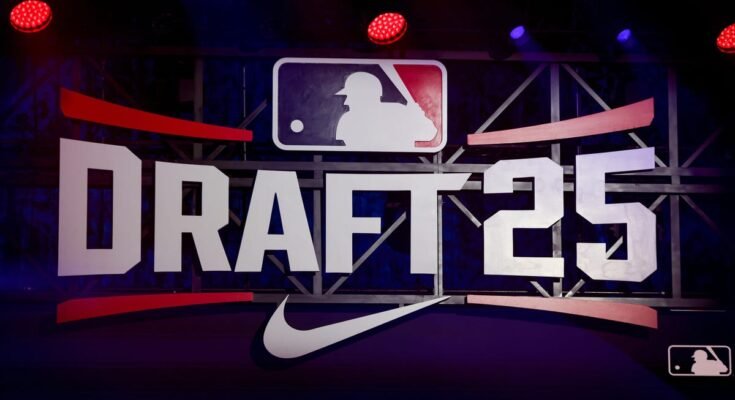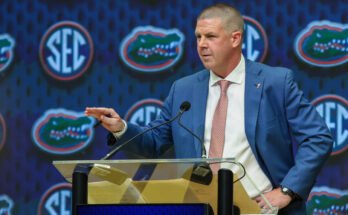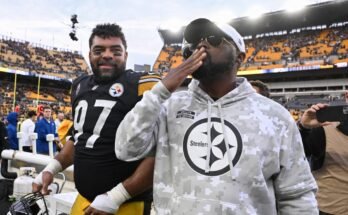This week marked the recovery of the MLB 2025. Three USC baseball players heard their names called in this year’s event: Ethan Hedges by the Colorado RockiesCaden Hunter by the Baltimore Oriolesand Bryce Martin-Grudzialanek by the New York Yankees.
Obviously, it is great for these players that they were written. Each year, I cannot think of how the current Draft MLB system is defective and how bad it is for university baseball by discouraging players from staying in school longer.
Let’s start with a brief refreshment on the current rules of the MLB project:
Eligibility
Unlike the NFL and the NBA, there is no “declaration” for the MLB project. Secondary seniors are automatically eligible for draft, as are players of the junior university. At the college of four years, players are eligible if they have played at least three years of university baseball and / or are at least 21 years old.
Decide to sign
After the draft, the players have until July 28 to decide whether or not to sign with the team that drafted them. For secondary players, the decision is generally between the signature and the transformation of the professional immediately or the college. For university and juco players with eligibility, they must choose between staying at school for another year (either in their current program, or transfer) or sign and abandon their remaining eligibility for the NCAA.
Slot bonuses and bonus pools
After having signed, players almost always start their career in minor leagues, where their real wages are very little (which is another problem in itself). Consequently, the majority of the money they earn until they reach the majors come from the signature bonus they sign after being written.
However, unlike the NFL, signature bonuses are not a defined amount. Each project has a “location value”, which is essentially equivalent to a suggested amount. The total signature bonus pool of a team to allocate to all their recovery choices is equal to the sum of the values of the location of all their recovery choices.
College elderly have very little lever
As mentioned earlier, after being written, players must choose between signing with the team that chose them or going / stay at school. Some players and their agents will use the threat of not signing in order to demand the team that wrote them to sign them above their niche bonus.
However, the elderly from colleges have very little lever because they no longer have eligibility. Consequently, they are often forced to sign much less than the location bonus in order to give the team more money to sign their other recovery choices.
The ninth and tenth round number
Bonus Pool rules only apply to selected players during the first ten laps of the draft. For players selected in the 11-20 towers, the teams can sign them up to $ 150,000 without it counting with their bonus pool.
Consequently, many teams will select the elderly from colleges to the ninth and tenth rounds of the project, the last in which the bonus pool rules apply. They do it because they know that they will be able to sign these players unless their money machine value, giving them more money to sign their other recovery choices.
The elderly of college are silent
The result of all this? The elderly of the college are punished. Their reward to stay in school longer to continue your studies and develop more at the college level is forced to sign money on the dollar.
For example, in the ninth round, the Dodgers of Los Angeles Selected Connor O’Neal, a senior recipient in southern Louisiana. Although The value of the location for the choice was $ 196,000,, O’Neal signed for only $ 2,500Giving the team’s additional $ 193,500 to spend on their other recourse choices.
Bad for university baseball
Because the draft system is so strongly stacked against college seniors, players are strongly encouraged to sign earlier, either after high school, junior college, or their junior year. Consequently, almost none of the best players arrive at their senior college year – and the few who tend to undergo a major financial penalty to do this.
Not only is this system bad for these players, but it is also terrible for the university baseball sport. Due to the rules, fans can rarely watch their favorite players play for four years, because they are strongly encouraged to leave before then.
One of the best things about Nile in university football is that it caused players who could have otherwise become professionals early to stay in school longer – which is ideal for sport. In baseball, however, this is not what is happening.
Hurts the long -term players
As mentioned above, each team has 20 draft choices each year. With only 26 places on each list of major leagues, the figures obviously do not add up. The result is that Less than 20% of players who are written find themselves in major leagues. (Although this percentage probably finances to go up, since the MLB has reduced the size of the project in recent years.)
For this huge group of players who have not reached the big leagues, the signature bonus will not last forever. A university degree would be invaluable for them to have long term. However, due to the system in place, the majority of these players never attended college to start or leave before their diploma.
Potential solutions
So what can we do to solve this problem?
Fortunately, at least help should happen in the form of an increase in scholarships. During last season, the NCAA scholarship limit for baseball was only 11.7, despite some lists with up to 40 players. As part of the new house colony, however, baseball programs will now have 34 purses. This will probably keep other players at school, because many will no longer have to deal with the financial burden on payment of school fees.
In addition, however, MLB should perhaps consider adopting a more project format like NFL – with hard signature bonuses rather than slit pools and suggested amounts. Doing this would prevent not only the elderly from colleges from getting screwed up, which would potentially make more players also stay in school, because they would know that with a strong senior year, they could always get a large signature bonus and even increase their draft stock.
In the end, the majority of players selected in the MLB draft will probably still be high school students and university juniors. With some changes in their system, however, the league could help university baseball and do things correctly for those who have chosen to stay in school.



